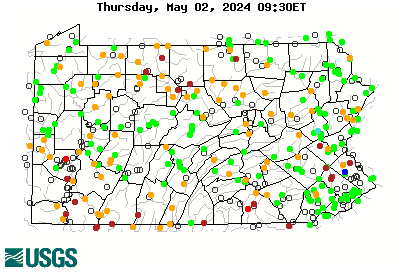pcray1231
Well-known member
Yes.I have a basic understanding of statistics. It looks like what your saying is there was collinearity in the regression model?
I'm not sure I see the same? Brook trout streams were smallest and highest gradient. Brown trout streams were largest and lowest gradient. Sympatric streams fell in the middle on both accounts.It would seem like the fact that zero sympatric streams had a barrier but yet gradient was not drastically different would support a causal link to barriers.
I think you are going by Table 1, and comparing sympatric to brook trout with barriers. Correct? It's a fair point, that none of the sympatric streams had barriers. But also look at brook trout streams with barriers vs. brook trout streams without barriers. They are, on average, even more brookie style than brook trout streams without barriers.
Looking at figure 4 is fairly telling. The "tell" would be if there were black circles in the lower left, but no black triangles. i.e. streams expected to be brown trout but were brookies instead. There are 2 black circles kind of down there. But right among them are several black triangles (brook trout streams without barriers). You can kind of drawn a diagonal line from upper left to lower right that separates brook trout from brown trout water based on size and gradient. That's your base "rule", the major correlation here. There are a few exceptions. Those exceptions can important, but more of the brookie favoriting exceptions, i.e. brookie streams to the lower left of the line, actually don't have barriers. So it's not showing a barrier effect. If you could have 1 factor that explained most of the exceptions, then you could say, yeah, that might be matter. But that's not the case here.
In this study, barriers were primarily located on waters that would be expected to be brookies anyway. In the exceptions, where brookies are present when other factors say you could have browns, more of them don't have barriers than those that do. I'm not saying I'm against barriers. I think there are situations where they are likely beneficial. We're on the same team. Just saying the data in this study can't really be used to prop it up. If anything it tells you that they aren't needed EVERYWHERE. Which is something I think we'd have agreed upon as well.
When the benefit of something like a barrier, where being beneficial is the exception rather than the rule, it's going to be real hard to find it in statistics. Case studies are a better approach. Find a stream that SCREAMS browns, but has a barrier and is brookies due to it. Or make one, by taking a sympatric stream with a sizable % of browns, erect a barrier, remove the browns, and monitor the brookie population.
Last edited:





